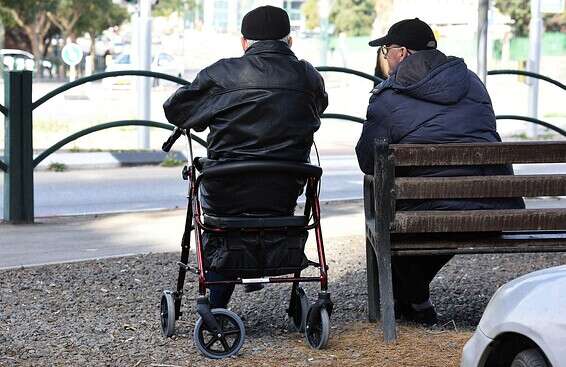Risk should be defined according to functional status and background disease, and not by chronological age. • Isolation also has serious consequences.
Illustration
Photo:
Getty Images
Since the spread of the Corona epidemic in the world and in the country, experts have stressed the importance of protecting the elderly population from contagious disease in the face of high risk. This recommendation is based on epidemiological and statistical literature that demonstrates a direct correlation between age and morbidity and mortality from the corona, mainly from the age of 60 and over. Some background diseases have also been associated with this increased risk, including heart disease, diabetes, cancer and lung disease.
In light of this, the elderly population was instructed to avoid leaving the house and even leaving the apartment door in sheltered housing. Unfortunately, the decision-making process is missing more important information about the correlation between age and morbidity and corona virus mortality. This information has been known for many years to geriatricians and gerontologists, who abandoned the chronological age and moved to characterize functional age as a measure of aging (physical and cognitive function). Indeed, we all know 90-year-olds and 100-year-olds who continue to have independent, active daily lives, while 60-year-olds need help or dementia.
Data published today in the world show that age risk is indeed uneven by age, and there is a significant difference between the elderly with background diseases and the elderly without background diseases, and even between the elderly without background diseases for young people with and without background diseases. In most countries (and in Israel), the percentage of elderly people who have passed away is high, but almost all of them are elderly people who live in nursing wards, and not independent elders in sheltered housing or in the community.
More on:
At the Heart of Distress - A Trip to Social Security Branches: "Heart Broken"
Concern: Corona will lead to a wave of chronic illnesses due to malnutrition
Yes for isolation not for solitude
It is therefore appropriate to define the elderly at risk according to their functional status and background disease, and not according to their chronological age. It is very unfortunate that additional critical information is absent from the decision-making process and is the known and grave dangers of social isolation and the reduction of the activities of the elderly. These dangers include loneliness, functional deterioration, and cognitive decline until dementia worsens. Each of these dangers is recognized by many studies as leading to morbidity and mortality rates of 30% to 90%! Dangers far outweigh the dangers of the Corona virus.
It seems, then, that the desire to prevent morbidity and mortality among the elderly is done with tools that do not reflect the true risk, and carry with them a much higher risk of morbidity and mortality by their preventive actions.
And finally, I want to make a point that I think is just as important and perhaps even more important than the previous ones: the civil rights of the elderly. As part of the age-old phenomenon of society in which many regard the elderly as helpless, mindless and in need of our protection, the discourse from the beginning of the epidemic to the present day is patronizing and patronizing, in which they decide whether to "close" the elderly or "allow" them to leave. These are citizens like the rest of the citizens, and it is inconceivable to decide for them. It was appropriate to use proper information and to allow anyone, old or young, to exercise judgment in accordance with the information provided to them.
It is also appropriate that the information be presented to real, transparent, accessible and clear information to the general public, both old and young. The public should be told that information about the disease is still lacking, but the existing information allows for correct decision making these days. The public must be convinced of the importance of the guidelines for citizens and society, and not act in intimidation and punishment. A prudent public will know how to better adopt the information from a frightened public, and to act voluntarily rather than coerced. We wish all of us who are educated to act properly, to help each other and learn to live on the side of the disease, much like other previous diseases, soon.
The writer is an expert in geriatrics, Hadassah Medical Centers - The Hebrew University

